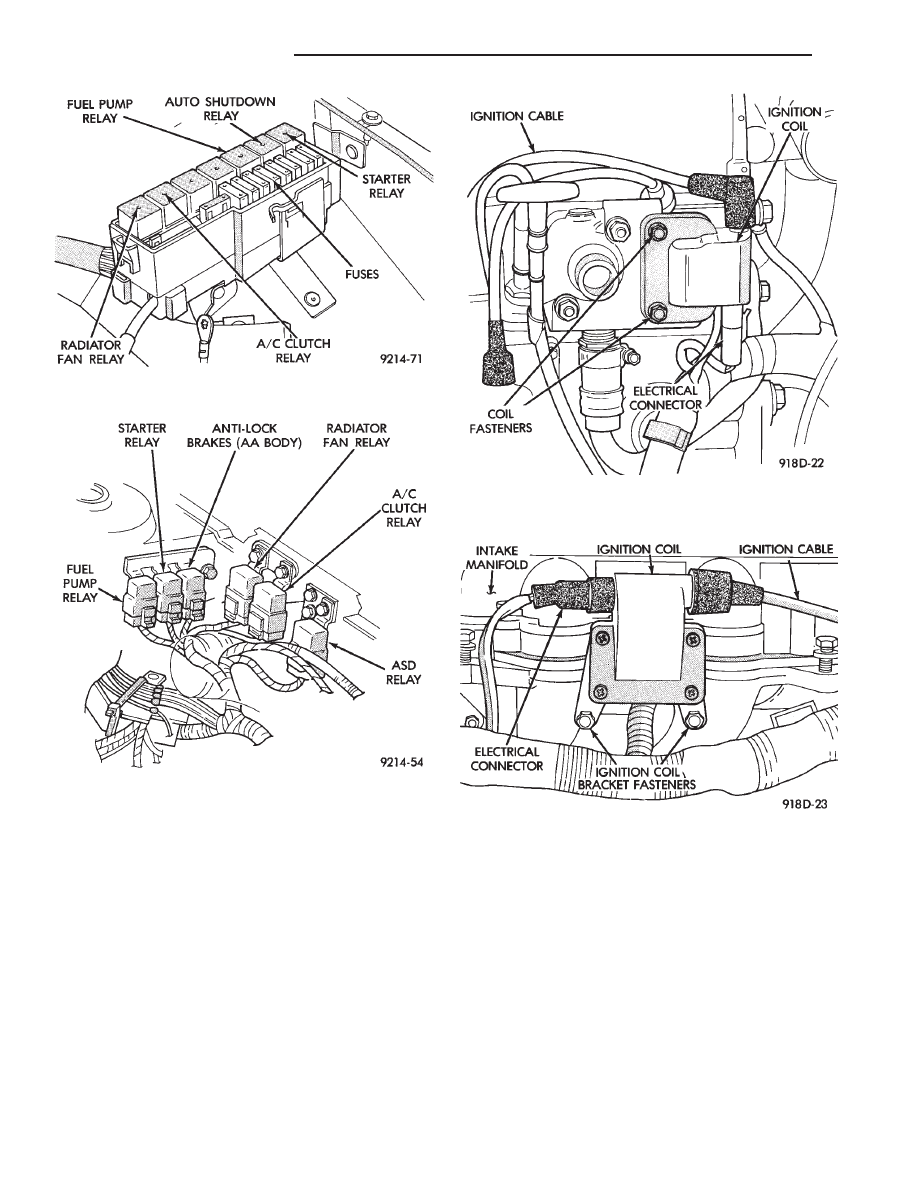Chrysler Le Baron, Dodge Dynasty, Plymouth Acclaim. Manual - part 287

up. Refer to Auto Shutdown (ASD) Relay and Fuel
Pump Relay in this section.
On 2.2L TBI, 2.5L TBI and 2.5L MPI engines, the
ignition coil is mounted to the thermostat housing
(Fig. 29). On 3.0L engines the coil is mounted on the
rear of the intake manifold next to the air cleaner
(Fig. 30).
Fig. 28 Relay Identification (AA and AP Bodies)
Fig. 29 Ignition Coil—2.2L TBI, 2.5L TBI and 2.5L
MPI Engines
Fig. 30 Ignition Coil—3.0L Engine
Fig. 27 Relay Identification (AG and AJ Body)
8D - 10
IGNITION SYSTEMS
Ä